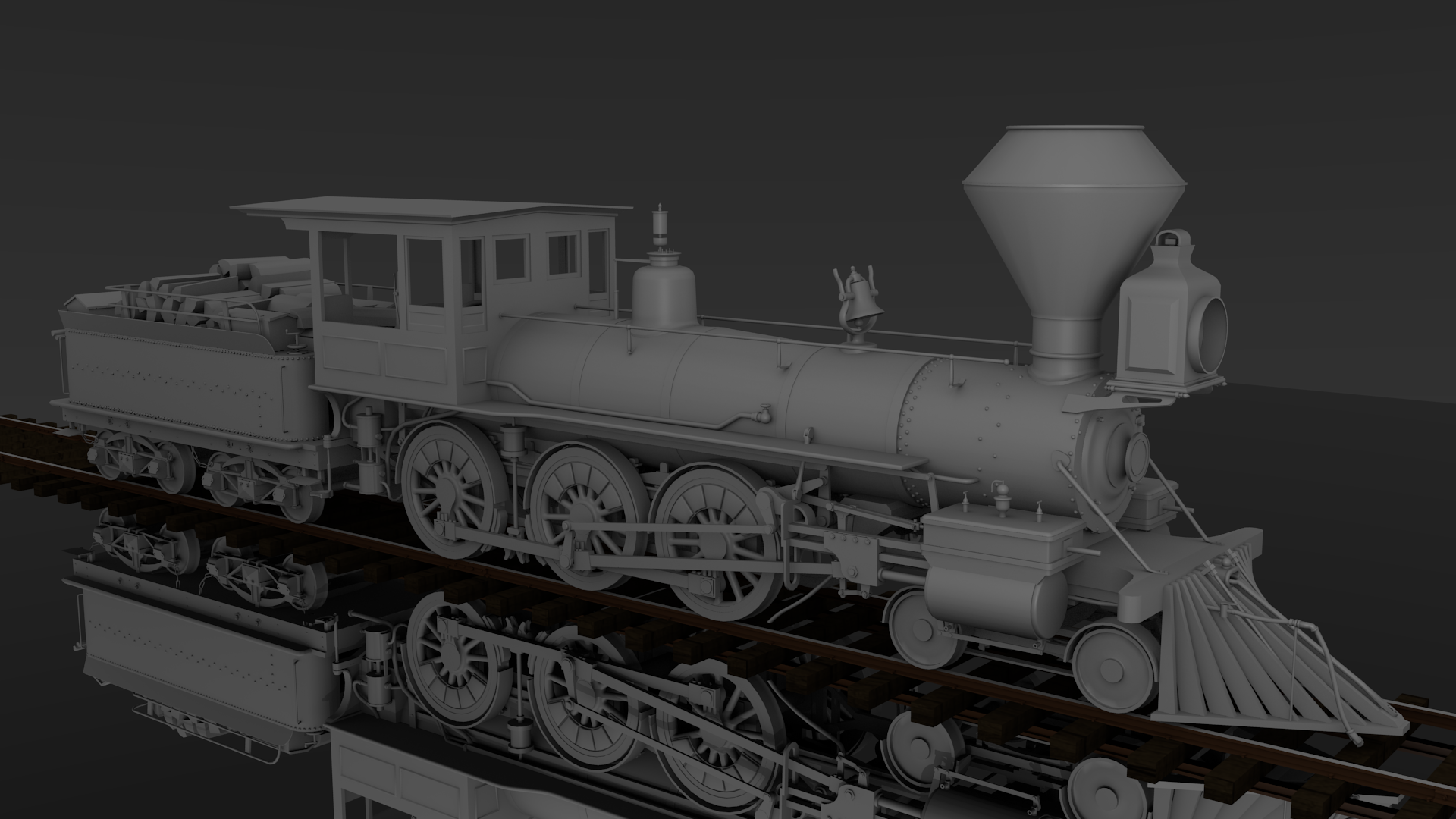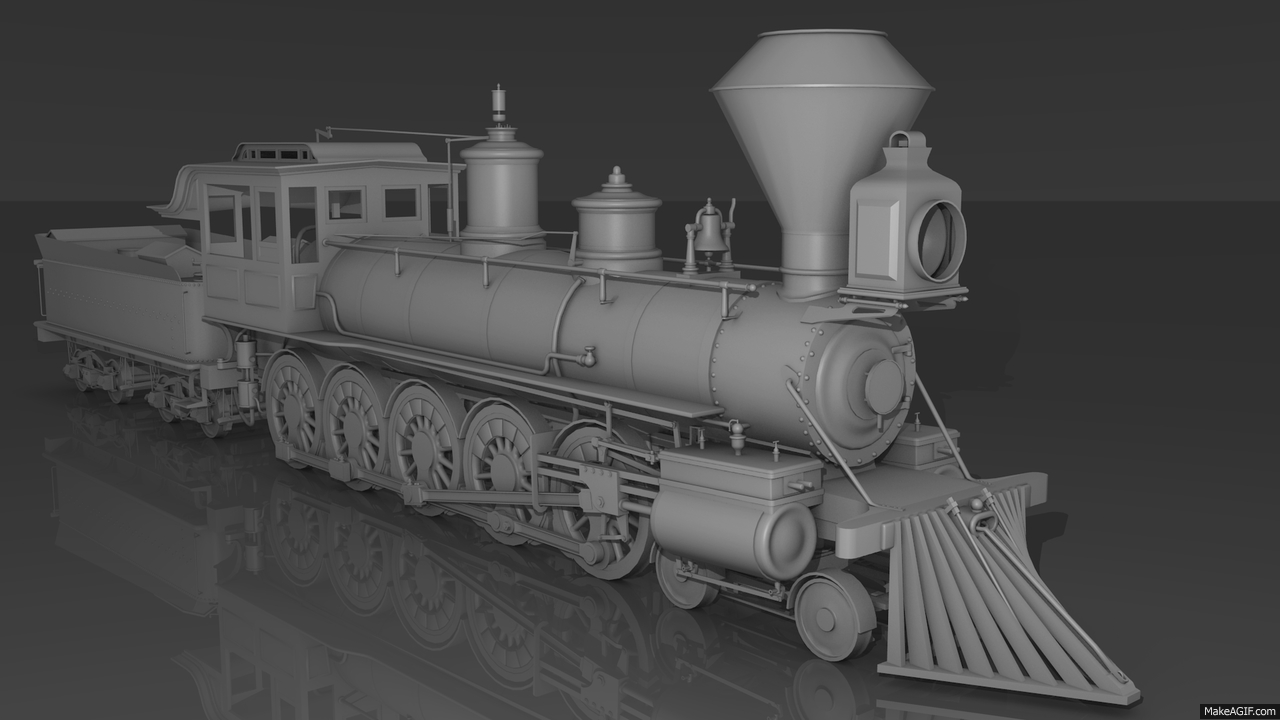HOME | DD
 trainboi — Stevens Flare
trainboi — Stevens Flare

#19 #blender #central #pacific #railroad #railway #stevens #wheeler #ten
Published: 2015-11-14 16:47:37 +0000 UTC; Views: 1555; Favourites: 24; Downloads: 0
Redirect to original
Description
Sacramento-built 4-6-0, only my second 19th-century loco that isn't a Baldwin. Specifics as per CP #19.Related content
Comments: 21

An exceptional 3D model of a lesser-known CP locomotive, excellent work.
👍: 0 ⏩: 0

Oh my goodness... this model is a work of art. It's so nice to see A.J. Stevens get some attention... I've long been a fan of his work, which was so innovative in so many ways. I've often felt that his fascinating designs are overlooked when it comes to representations of 19th Century railroading, where the basic "Wild West"-style still seems to hold all the glory.
I do have one question-- I was always under the impression that Stevens favored a completely straight "shotgun" boiler, complete with its signature British-style polished brass dome case and the lack of a top-mounted sand dome. Did he actually make slightly conical boilers (too?), as you've portrayed here...?
👍: 0 ⏩: 1

Thanks! I should post the .gif I did out of 30 renders; one of the people on the Trainz forums said they had watched it, mesmerized, for about five minutes just watching the valve gear go 'round. I love the valve gear, with its dual valves and strangely overbuilt gear. Surprisingly, the real animation challenge was the brakes, which are functioning on this model.
Stevens was a wonderful engineer; I've been familiar with one of his preserved engines, V&T No. 18 Dayton, since I was a child. It was one of his first ten engines, and a gorgeous example of his work(though unfortunately wearing a Baldwin tender tank and a nonoriginal scheme. Oh well.) At the V&T Historical Society conference, two presenters did a fantastic talk on the V&T-ordered Stevens locos, which really encouraged me. Suffice to say that between myself, Andrew at PacificNG, and some 1880s engineering magazines, I was able to get hold of drawings for this loco(#19) and the infamous El Gobernador, plus a PRR bobber caboose that will very easily convert into a CP one. Another Trainz community member was already working on combination boxcars, so we should have a reasonable 1880s fleet before too long. (note that I also intend to build the early 4-8-0s and possibly 2-8-0s out of El Goob's design).
Stevens did use wagon-top boilers on occasion; in fact I seem to see them more often than not. The first batch of 4-4-0s to come out of Sacramento all had them, as did most of his 4-6-0s, going off photos, and his 2-8-0s, Mastodon and El Goob. So they aren't unheard of. I do take point though, his brilliant high-drivered CP and SP 4-4-0s of later times all seem to have straight boilers with the polished domes - very stylistic.
👍: 0 ⏩: 1

I would love a gif like that. XD And I also love the dual valves and the absolutely demented valve gear that operated them. The man was ahead of his time, for sure. I must have read some false information about his boilers, though-- to be honest, most of what I know about the man's work comes from one rather old book from the '50s or so. I'm a bit disappointed, actually, because I find straight boilers very cool. In any case, his wagontop boilers, I would argue... are very straight as far as wagontop boilers go. XD
👍: 0 ⏩: 1

Indeed; many of them, especially on his later 4-6-0s and large freight engines, resemble the tapered boilers seen on modern locomotives. The gif will be posted in a moment.
👍: 0 ⏩: 0

Cool! Is this locomotive from the 1860s?
👍: 0 ⏩: 1

Nope, it's a rather modern design from the early 1880s, built with a variant of the Walschaerts gear. Stevens was actually the second builder(the first being Mason) to adopt that style.
👍: 0 ⏩: 1

Oh. I see. Thanks fer the information. I thought the Walscharts valve gear wasn't invented until the 1900s. But after learning that the DSP&P forneys from 1879 also had this valve gear, I was wrong.
👍: 0 ⏩: 1

How come this engine don't have a sand dome?
👍: 0 ⏩: 0

The classic american style of cabs is as if a bunch of architects had designed an engine.
👍: 0 ⏩: 1

Heh. There is definitely a feel of aesthetics to it, Mason and Stevens even left counterweights off of some locomotives' drivers because they "threw off" the balanced appearance of the drivers. Mason even made the spokes on the opposite side out of heavier wood so as to keep proper weight distribution while still maintaining appearance. It was a huge thing.
Surprisingly enough, this was born of inefficiency - the Russia Iron was by no means a good insulation, and if it was anything less than sparkling, it would not perform up to par. The same went for brass and copper, which many people stylistically associate as fancy but was very utilitarian in its use on early locomotives. That is why you often see brass steam domes but painted iron sand domes - the bare brass was necessary for thermal efficiency and got so hot that normal paint would not stick to it.
👍: 0 ⏩: 0

Think Walschaerts but with a rocker arm and two extra rods to work the reverser rather than an expansion link. That's pretty much it...
Oh, and two more extra rods to connect the combination link to the valve stem.
In short, it's Walschaerts as built if you didn't know how to build it.
👍: 0 ⏩: 1

hm............that.................kinda.............makes..............possible.....sense
👍: 0 ⏩: 1

LOL. There is an animation here if you want to be really confused. www.billp.org/Dockstader/Valve… You want file 10F with the A. J. Stevens gear of 1885, though the 1882 version in file 10J is almost more hilarious because of his early ideas still using inside eccentrics.
👍: 0 ⏩: 1


























